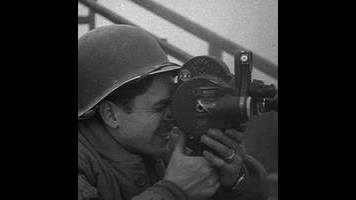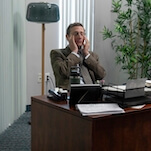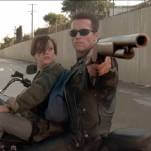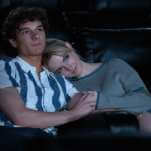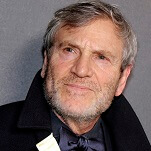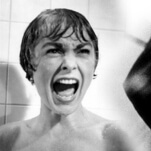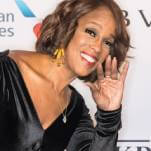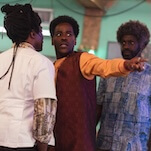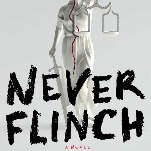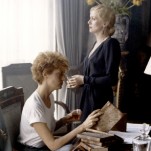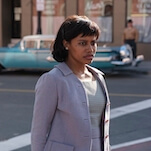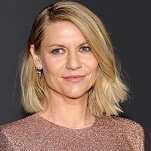“It left me just… speechless. Colorless. Bloodless. I couldn’t possibly believe there was that kind of savagery in the world, you see.”
Tackling Five Came Back as a whole may have been a simpler task than taking it on piece by piece. There’s so much to be mined from each installment that, in the case of the previous two episodes, it felt like something of a blessing. The series itself could have been much longer and still had plenty to say, and that’s true of these reviews as well, so the chance to dig into each chapter in some detail was exciting. Now, however, we arrive at “The Price of Victory,” and suddenly, reviewing all three hours at once seems a much less daunting task. To articulate that which shakes you is no simple task, and while a critic may not feel up to the job, the same can’t be said of the men at the center of Five Came Back.
It comes as no surprise that the conclusion to this remarkable series packs a wallop—the previous episode ends with D-Day on the horizon, after all—but what is surprising is how gracefully Laurent Bouzereau and Mark Harris link these monstrous and stunning events and truths to the art which followed them. Does tying Frank Capra’s It’s a Wonderful Life to George Stevens’ experiences at Dachau seem like a bit of a stretch? Sure, but somehow, it isn’t. George Bailey’s story is also Capra’s, and Ford’s, and Wyler’s. There’s much that this hour makes clear, but chief among that crowded group is this: the experiences of and footage captured by these men changed the United States, the world, and the directors themselves in irrevocable ways.
“The Price of Victory” moves slowly, meditatively, a tone altered only slightly when Stevens and his team enter Dachau. As Ford and Stevens record the events of D-Day, they and their cameramen seem to face it unblinkingly, aware of the fact that they were risking their lives but there to capture the day, no matter the cost. In at least the footage we see, they never seem to flinch. Yet when Stevens arrives at the concentration camp, not knowing what he’ll find, that unflinching quality evaporates. Neither he nor Five Came Back shies away from the atrocities discovered there, but brief cuts to black, unique to the hour, capture, without words, the horror, disgust, disbelief, guilt, and grief Stevens and his team must have felt. When we see his footage, it’s as steady and sure as ever, but with every brief jump away, we’re reminded of the man behind the lens. The churning of our stomachs is the churning of his.
Much of “The Price of Victory” is deeply affecting, from Ford’s bender to Wyler’s hearing loss to the damaging suppression of Huston’s Let There Be Light. Still, it’s Stevens’s realization that he was no longer a filmmaker, that his job had changed to that of a recorder of evidence, that most permeates the film. He, the other directors, the citizens from nearby towns made to walk through the death camps—they all became witnesses first and all else second. That’s a role not limited to those who entered or saw footage from Dachau and other concentration camps (though Stevens was also a witness in the legal sense, as he created films to be used against the perpetrators in their trials for war crimes). Wyler makes his way to his hometown of Mulhouse, only to find it a ghost town; Huston visits enlisted men whose injuries were mental, decades before post-traumatic stress disorder was added to the DSM. The world had changed, and these men saw it happen, and made sure others did, too.
There are other tragedies captured in “The Price of Victory,” however, and in those cases, the filmmakers aren’t merely witnesses. While General MacArthur may have stopped it from being shown to soldiers and civilians alike, it’s important to recognize the humanist and often heroic Capra and Huston as the same men who completed the final drafts of Know Your Enemy: Japan. The bombing of Hiroshima and Nagasaki may be the only true horror that feels a bit brushed over by Five Came Back, but the film doesn’t shy away from the incredible jingoism and racism Del Toro underlines in Know Your Enemy. It’s to the credit of Harris and Bouzereau that they don’t sweep these realities under rug, and the result of that decision is a film that feels much more authentic, filled with portraits as complex and contradictory as their subjects deserved.
That complexity can be found in the post-war works of Wyler, Stevens, Ford, Capra, and Huston as well. While the nostalgia many of us associate with It’s a Wonderful Life may make it the most potent, it’s hard to deny the impact of the key shot in Wyler’s The Best Years of Our Lives, particularly as described by Spielberg. In a few seconds, he captures the vastness of a man’s grief, displacement, and fear. It’s powerful in the way that great, honest art can be, burrowing into one‘s brain or heart in an instant and never truly leaving.
Five Came Back is a portrait of five artists. It’s much more than that, of course—it’s a dissection of reality, of the lines between reality, documentary, and propaganda; it’s a timely reminder of the potency of hatred and the ways in which people can be moved and manipulated, for good or ill; it’s many other things. Art, however, is what ties it all together. Five men were changed, and with their griefs and fears and loves, they made things that changed us.
Finale grade: A
Series grade: A
Stray observations
- God, I hope they do Pictures at a Revolution next. Are you there, Netflix? It’s me, Allison.
- Bouzereau never deliberately references Saving Private Ryan or Schindler’s List, but watching this footage, the incredible influence it had on Spielberg is evident.
- “I think he really faces the darkest part of the mirror in that film.” I could listen to Guillermo Del Toro talk about It’s a Wonderful Life forever.
- “He drove it back to the warehouse, locked it up, and never looked at it again.” That’s a perfect, horrifying little sentence.
- Each of the five contemporary filmmakers they brought in were incredibly well-informed and suited to the task at hand, but I’m duty-bound to ask this, so here goes: there’s not one female filmmaker out there who wouldn’t have been as suited? Not one?
- It should be evident, but I found Five Came Back deeply moving. Looking forward to discussing it with you further in the comments. Thanks so much for reading.
